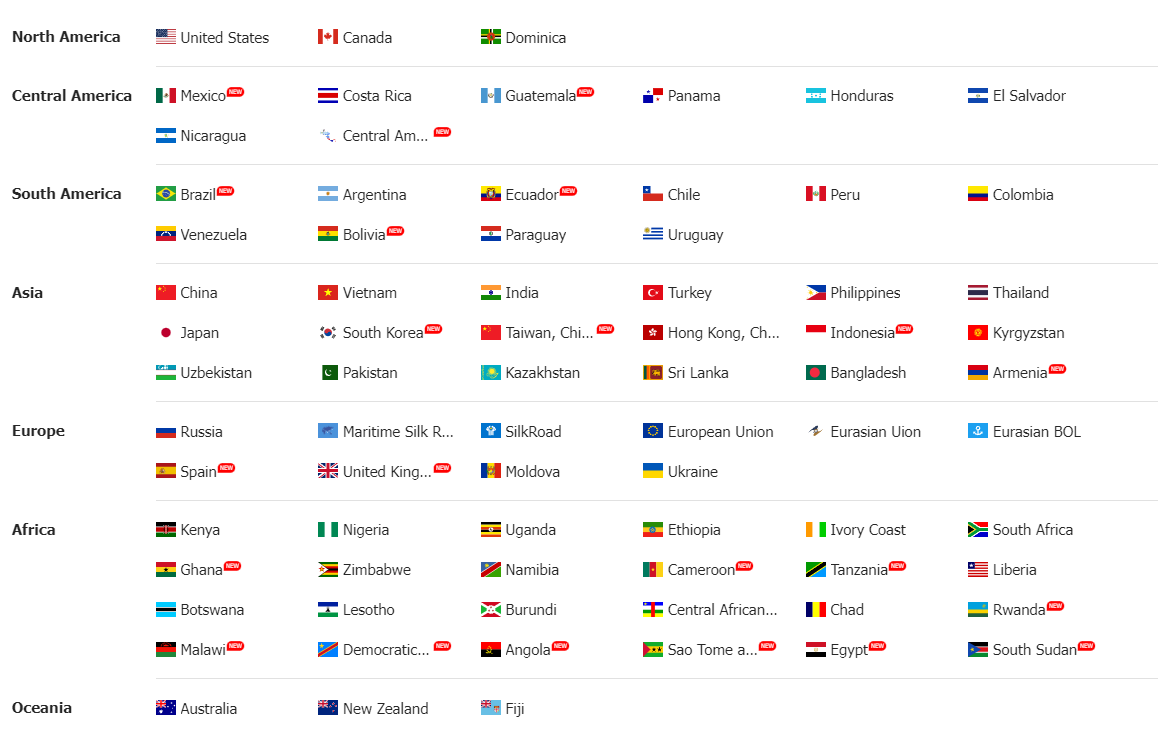 Trade Data
Trade Data
 02-09-2024
02-09-2024
Chile, a country in South America with a long coastline along the Pacific Ocean, has a robust and diversified export economy. It is well-known for its natural resources, particularly copper, but its export portfolio includes a wide array of goods and services that contribute significantly to its GDP. This article provides an overview of Chile's recent export data, highlighting key trends, major export commodities, and the primary markets for Chilean goods.

Key Export Commodities
Copper and Minerals: Chile is the world's largest producer of copper, and this metal remains the cornerstone of the country's export economy. In recent years, copper exports have accounted for nearly half of Chile's total export revenues. The country also exports other minerals, including lithium, molybdenum, and iron ore, which are vital to various industries worldwide, particularly in technology and energy sectors.
Agricultural Products: Besides minerals, Chile is also a significant exporter
of agricultural products. The country's diverse climate allows for the
production of a wide range of agricultural goods, including fruits (such as
grapes, apples, and cherries), vegetables, and wine. Chile is one of the world's
leading exporters of fresh fruits and is particularly known for its high-quality
wine, which enjoys growing demand in international markets.
Fishery and Aquaculture Products: Chile's extensive coastline makes it a major player in the global seafood industry. The country is one of the largest producers of farmed salmon, and its seafood exports, including fish, shellfish, and other marine products, are a crucial part of its export portfolio.
Click here to check Chile's export data
Major Export Markets
Chile's export markets are diversified, with Asia, Europe, and the Americas being key destinations for its goods:
China: China is Chile's largest trading partner, particularly for copper. The demand for copper and other minerals in China's industrial and technological sectors drives a substantial portion of Chile's export revenue. In recent years, Chile has also expanded its agricultural exports to China, especially in fruits and wines.
United States: The United States is another significant market for Chilean exports. The U.S. imports a variety of products from Chile, including fruits, wine, seafood, and minerals. The Free Trade Agreement between Chile and the U.S., implemented in 2004, has bolstered trade between the two nations, reducing tariffs and fostering economic ties.
European Union: The European Union is a vital market for Chile, particularly for agricultural and fishery products. Chilean wines, fruits, and seafood are highly sought after in Europe. The Association Agreement between Chile and the EU, which includes provisions for trade, has facilitated this robust trading relationship.
Click here to check Chile's export data
Recent Trends
In recent years, Chile's export sector has faced both opportunities and challenges. The global demand for minerals, especially copper, remains strong, driven by the growth of renewable energy technologies and electric vehicles. However, fluctuations in global commodity prices and trade tensions, particularly between the U.S. and China, have introduced uncertainties in export revenues.
Additionally, Chile has been focusing on diversifying its export portfolio by promoting non-traditional exports, such as services, technology, and higher-value agricultural products. The country's efforts to enter new markets, particularly in Asia, Africa, and the Middle East, reflect a strategic approach to reducing dependence on traditional commodities and markets.
Click here to check Chile's export data
Conclusion
Chile's export data underscores the country's importance as a global supplier of minerals, agricultural products, and seafood. While copper remains the dominant export, Chile's diversified economy and strategic trade partnerships have positioned it well in the global market. As the world economy evolves, Chile's ability to adapt and diversify its exports will be crucial for sustaining its economic growth and expanding its presence in new and emerging markets.
Tendata iTrader compiles trade data from 218 countries and provides detailed
information on over 130 million import-export enterprises worldwide.
With a daily influx of 10 billion trade records, Tendata efficiently delivers contact details for over 700 million top-level executives and decision-makers in the import-export industry through advanced filtering. This includes email addresses, phone numbers, social media profiles, and more. Additionally, we offer synchronized company profiles, product images, and website links, along with 19 types of visual reports. These tools assist foreign trade enterprises in precise market positioning and thorough market analysis, enabling you to quickly find the exact buyers and suppliers you need.
(>> Visit the Official Shanghai Tendata Website for More Details <<)

Category
Leave Message for Demo Request or Questions


 T-info
T-info T-discovery
T-discovery

 My
Tendata
My
Tendata Market Analysis
Market Analysis Customer
Development
Customer
Development Competitor
Monitoring
Competitor
Monitoring Customer Relationship
Customer Relationship




































































































































